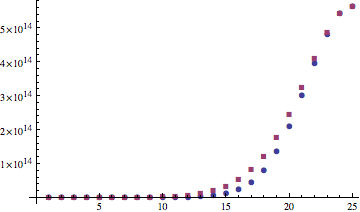Let $H(N)$ be a random variable representing the number of heads in $N$ fair coin-tosses.
Then, on one hand:
$$\Pr[H(N)\leq k] = {1\over 2^N} f(N,k) $$
On the other hand, by Hoeffding's inequality:
$$\Pr[H(N)\leq (1/2-\epsilon)N] \leq \exp(- 2 N \epsilon^2)$$
Taking $\epsilon = (1/2)-(k/N)$ gives:
$$\Pr[H(N)\leq k] \leq \exp\bigg(-2 N \left({1\over 2} - {k\over N}\right)^2\bigg)$$
Therefore:
\begin{align*}
\textbf{(1)} && && f(N,k) \leq 2^N \exp\bigg(-N/2+2k-2k^2/N\bigg)
\end{align*}
Another bound that contains a power of two is proved combinatorially here:
$$f(m k + m - 1 ,k) \leq 2^{m k}$$
Substituting $m = {N+1\over k+1}$ gives:
\begin{align*}
\textbf{(2)} && && f(N ,k) \leq 2^{(N+1){k\over k+1}}
\end{align*}
Above, Joe Dohn proved the following inequality in a comment:
\begin{align*}
\textbf{(3)} && && f(N,k) \leq \bigg({e N \over k}\bigg)^k
\end{align*}
This Wikipedia page cites the following inequality, where $\epsilon = N/k \leq 1/2$:
\begin{align*}
\textbf{(4)} && &&
\frac{1}{\sqrt{8 N\epsilon(1-\epsilon)}} \cdot 2^{E(\epsilon) \cdot N} \leq f(N,k) \leq 2^{E(\epsilon) \cdot N}
\end{align*}
where $E(\epsilon) = -\epsilon\log_2(\epsilon) -(1-\epsilon)\log_2(1-\epsilon)$ is the binary entropy function of $\epsilon$.
Note that $N E(\epsilon) = k \log_2(N/k) + (N-k)\log_2(N/(N-k))$. So the upper bound is:
$$
f(N,k) \leq \bigg({N\over k}\bigg)^k \cdot \bigg({N\over N-k}\bigg)^{N-k}
= {N^N \over k^k (N-k)^{N-k}}
$$
From Michael Lugo's bound:
$$ f(N,k) \le {N \choose k} {N-k+1 \over N-2k+1},$$
we can get, by letting $f(N,k) = f(N,k+1) - {N \choose k+1}$:
\begin{align*}
\textbf{(5)} && &&
f(N,k)
\leq
{N \choose k+1} \bigg[ {N-k \over N-2k-1} -1\bigg]
={N \choose k+1}{k+1 \over N-2k-1}
\end{align*}


